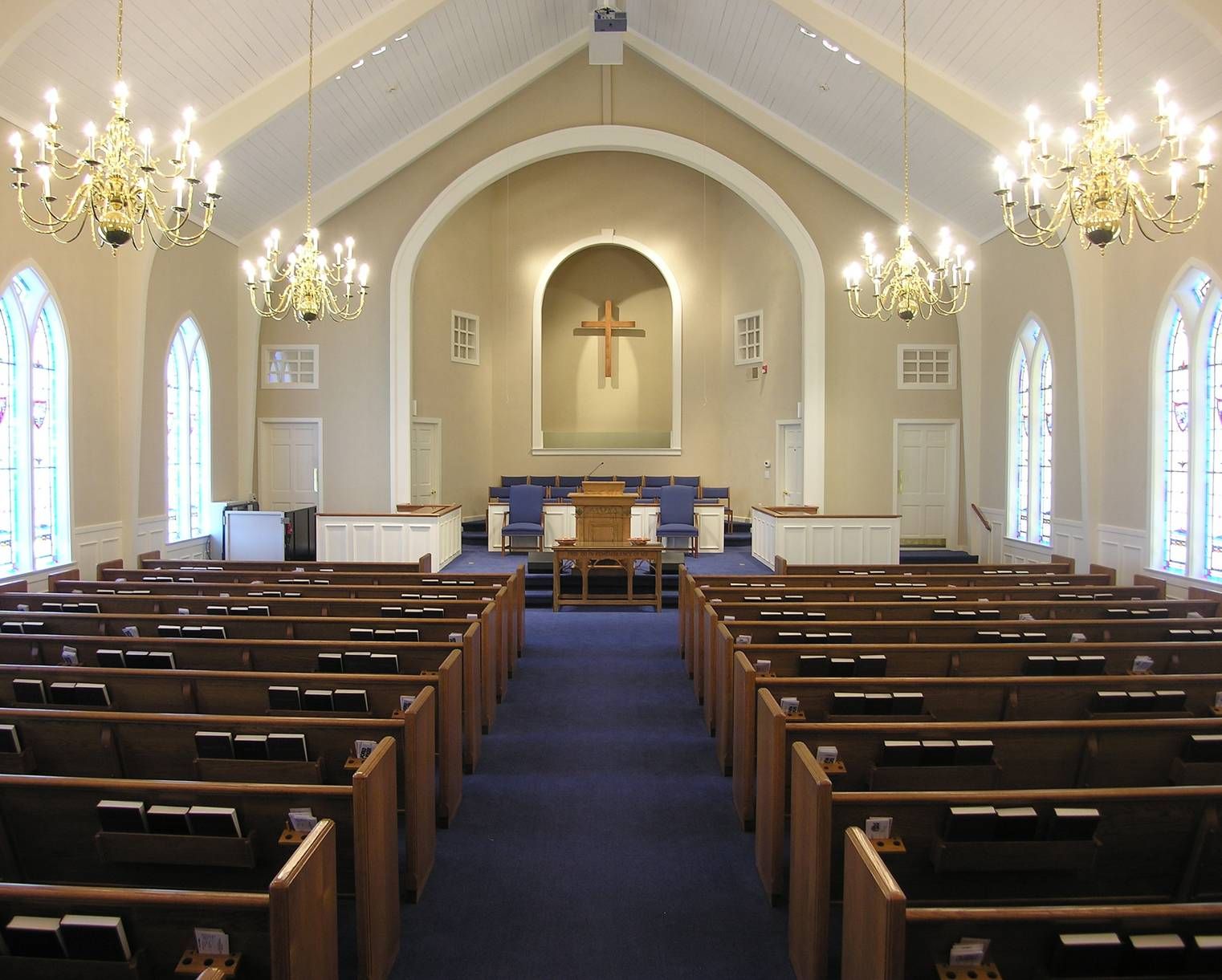Step into the realm of modern church design, where sacred spaces are evolving to embrace the spiritual needs of our ever-changing world. From stunning architecture that fosters an atmosphere of contemplation to the seamless integration of technology that connects communities, we’ll explore the latest trends shaping these hallowed halls. Prepare to be inspired as we dive into the transformative power of design, where aesthetics, functionality, and symbolism intertwine, creating spaces where faith and community flourish and the spiritual journey is enriched by a welcoming and dynamic environment.
Modern Church Interior Design: Creating Welcoming and Inspiring Sacred Spaces
Churches aren’t just about stained glass and pews anymore! Today’s houses of worship are embracing a fresh, contemporary look, blending traditional values with modern design elements to create spaces that feel both sacred and inviting.
Imagine walking into a church that feels as comfortable and welcoming as your own living room – a space where you can connect with your spirituality, but also feel relaxed enough to truly engage with your community. That’s the beauty of modern church interior design.
Adaptable Spaces for More Than Just Sunday Service
One of the biggest shifts is the move towards multi-purpose spaces. Modern churches are designed to be adaptable and flexible, easily transforming from a space for Sunday worship to a vibrant hub for community events, educational programs, or even just a quiet spot for reflection during the week.
Think movable walls that can divide a large sanctuary into smaller, more intimate gathering areas, or comfortable, modular furniture that can be rearranged to accommodate different group sizes and activities. This kind of versatility makes the church a truly dynamic space that serves the needs of the entire community, not just on Sundays.
Building a Sense of Belonging Through Design
Modern church interiors are all about creating a welcoming atmosphere where everyone feels like they belong. It’s about moving away from rigid layouts and embracing design choices that foster a sense of warmth, connection, and inclusivity.
Instead of traditional pews, picture comfortable seating arranged in a circular pattern, encouraging interaction and a sense of community during services. Think about strategic use of lighting to create a warm and inviting ambiance, or incorporating natural elements like wood and stone to connect the space to the beauty of the outdoors.
Accessibility is also paramount in modern church design. Ramps, wider aisles, and designated seating areas ensure that everyone, regardless of physical limitations, can fully participate in worship and community events.
The Interior Designer: A Partner in Creating Spiritual Experiences
In this new era of church design, interior designers play a pivotal role. They are the creative minds behind these transformative spaces, working closely with pastors, architects, and the congregation to understand their vision and translate it into a design that reflects their values and aspirations.
They have a deep understanding of how design elements like color, light, texture, and spatial arrangement can impact our emotions and spiritual connection. They are masters at creating environments that inspire awe and reverence, while also fostering a sense of peace, serenity, and belonging.
Modern church interior design is about so much more than just aesthetics. It’s about creating spaces that are both beautiful and functional, welcoming and inspiring; spaces that reflect the evolving needs of modern congregations and invite people to connect with their faith and their community in meaningful and fulfilling ways.
What Makes Modern Church Interior Design Unique?
Modern church interior design prioritizes functionality and adaptability, creating spaces that seamlessly cater to diverse activities and gatherings. It’s not just about pews and stained glass anymore! Imagine bright, open, and welcoming spaces, designed for everyone.
Key Features of Modern Church Design:
| Feature | Description |
|---|---|
| Adaptability | Spaces easily transform for various activities and events, utilizing features like movable walls and reconfigurable seating. |
| Hospitality | Welcoming atmosphere with comfortable seating, warm colors, and natural light. |
| Technology Integration | Enhanced worship experience with screens, sound systems, and online streaming capabilities. |
| Sustainability | Use of eco-friendly materials and energy-efficient solutions. |
| Inclusivity | Prioritizes accessibility and features for all members, ensuring everyone feels welcome. |
Transforming Traditional Spaces
Modern churches are like Transformers, shifting and changing to become whatever you need!
- Movable walls create bigger or smaller rooms in an instant.
- Reconfigurable seating allows for cozy circles or traditional rows.
- Multi-purpose rooms host everything from potlucks to yoga classes, making the church a true hub for the community.
These adaptable spaces mean a church can quickly switch from a traditional Sunday service to a youth group hangout spot.
Creating a Welcoming Atmosphere
Walking into a modern church should feel like getting a big hug! Designers use warm colors, comfy seating, and tons of natural light to create welcoming and inviting spaces. These churches are designed for hanging out and chatting, with plenty of shared spaces that encourage people to mingle and build relationships. It’s all about fostering that sense of belonging, making the church feel like a second home.
Embracing Technology and Sustainability
Technology is subtly woven into modern church design to enhance the experience, with features like:
- Crisp sound systems that make music sound heavenly.
- Giant screens that project song lyrics for everyone to sing along.
- Online streaming for those who can’t attend in person.
Churches are also going green, incorporating:
- Energy-efficient lighting.
- Eco-friendly building materials.
- Sustainable practices.
It’s about taking care of God’s creation and creating a healthier environment for everyone.
Prioritizing Accessibility and Inclusivity
Modern churches are all about radical hospitality, welcoming everyone with open arms. Designers are paying close attention to accessibility, making sure that everyone can easily navigate the space, through:
- Ramps and elevators, ensuring people with mobility issues can participate fully.
- Assistive listening devices for those with hearing impairments.
- Gender-inclusive restrooms.
Every detail is carefully considered to ensure that everyone feels seen, heard, and valued.
It’s more than just a building, it’s a reflection of a changing faith community. Modern churches are vibrant, adaptable spaces designed to meet the needs of a diverse and ever-evolving congregation.
Creating a Welcoming Church: How Does Design Foster Belonging?
A church is more than just bricks and mortar—it’s about the feeling you get when you walk through the doors. It’s about feeling welcome, comfortable, and part of something larger than yourself. Design plays a huge role in creating that welcoming atmosphere. It’s not just about aesthetics, it’s about shaping the experience for everyone who steps inside.
Comfort and Connection Through Design
When people feel physically comfortable, they’re more likely to relax and focus on the message and the sense of community around them. Design elements that achieve this include:
- Comfortable and supportive seating: Ergonomically designed chairs make a world of difference.
- Warm and inviting colors: Reds, oranges, and yellows can make a space feel cozier and more intimate.
- Natural light: It opens up a space and makes it feel more welcoming. Embrace windows, or incorporate skylights or light-colored paint.
Adaptability for Diverse Needs
Since a church is so much more than just Sunday service, it needs to be adaptable. Flexible spaces are key. Consider:
- Furniture that can be easily moved or reconfigured, allowing you to host a variety of events, from lively community gatherings to intimate prayer groups, all within the same space.
- Technology, a powerful tool for connection and inclusion. Displays for lyrics, online streaming of sermons, and other technology can create a more welcoming and inclusive atmosphere.
Creating a welcoming church is an ongoing process. It’s about paying attention to the details that make people feel comfortable, connected, and valued. By thoughtfully incorporating these design elements, you can create a space where everyone feels like they truly belong.
Beyond Traditional Worship: How Can Church Spaces Adapt to Diverse Activities?
Modern church design seamlessly blends aesthetic appeal with functionality, creating spaces that are both inspiring and practical. Let’s explore how these spaces have evolved.
Modern Church Design: A Symphony of Form and Function
- Functionality and Adaptability: Multi-purpose spaces adapt to the evolving needs of worship, fellowship, and community events. Interior designers utilize flexible seating arrangements, movable partitions, and modular furniture to create versatile environments.
- Hospitality-Driven Design: Warm and inviting spaces are created through the use of welcoming colors, comfortable seating, and natural light. Strategic placement of church chairs encourages social interaction and a sense of community.
Cultivating a Sense of Community Through Design
- A welcoming atmosphere is crucial for fostering a sense of belonging among congregation members.
- Designers create comfortable seating arrangements, common areas, and other elements that encourage interaction and connection.
Adaptable Spaces for Evolving Needs
- Modern church design embraces flexibility to accommodate diverse activities, such as services, events, and community gatherings.
- Movable walls, reconfigurable seating, and multi-purpose spaces allow for customization based on the occasion.
Design that Inspires Spiritual Growth
- Church interior design incorporates elements that enhance the spiritual experience and connect worshipers with the divine.
- Natural light, symbolic imagery, and serene color palettes can create a contemplative and reflective atmosphere.
Modern church interior design is an integral part of fostering a welcoming atmosphere where every member feels connected and valued. By incorporating elements of nature, light, and symbolic imagery, modern church design can enhance the spiritual experience and deepen the connection with the divine.
Fostering An Immersive Worship Experience
Contemporary church designs prioritize creating immersive environments that enhance worship by:
- Utilizing architectural elements, lighting, and acoustics to evoke emotion and connection.
- Integrating technology for live streaming, interactive displays, and sensory experiences.
Adapting Sacred Spaces
Churches are embracing contemporary designs to accommodate evolving worship styles while preserving traditional elements:
- Incorporating flexible spaces for different worship formats (e.g., traditional, contemporary, youth).
- Respecting historical and architectural heritage while introducing modern amenities.
Worship Space Transformation
Modern designs focus on creating spaces that facilitate a deeper spiritual connection:
- Incorporating natural light, open spaces, and calming elements to create a sense of peace and transcendence.
- Utilizing art, stained glass, and symbolic imagery to inspire reflection and meditation.
Harmonizing Aesthetics with Worship Styles
Church interiors are designed to align with the worship style and congregation’s needs:
- Traditional designs may feature ornate details, stained glass windows, and grand organs.
- Contemporary designs often emphasize simplicity, clean lines, and modern materials.
Modern church designs strike a balance between traditional elements and contemporary aesthetics. Natural light, open spaces, and calming elements facilitate spiritual connection. Sustainable practices and accessibility features promote environmental consciousness and inclusivity. Thoughtful use of technology enhances the worship experience and fosters connectivity.
Visit our page on modern Mexican interior design to delve into the vibrant and soulful aesthetics of Mexican culture seamlessly integrated into contemporary design principles. For those seeking a modern touch with a bold statement, explore our gallery on black trim interior design to discover how this timeless color can elevate your space with elegance. And if you’re drawn to the allure of darkness, immerse yourself in our exclusive collection of black door interior design ideas, where you’ll find captivating examples of how black doors can add a touch of drama and sophistication to any room.
- Ceramic Kitchen Wall Tiles: Style and Protection for Your Walls - December 17, 2025
- Kitchen tiling wall: Elevate your kitchen with stylish wall tiles - December 16, 2025
- Gray Kitchen Backsplash Tile: Ideas for a Stylish Upgrade - December 14, 2025









